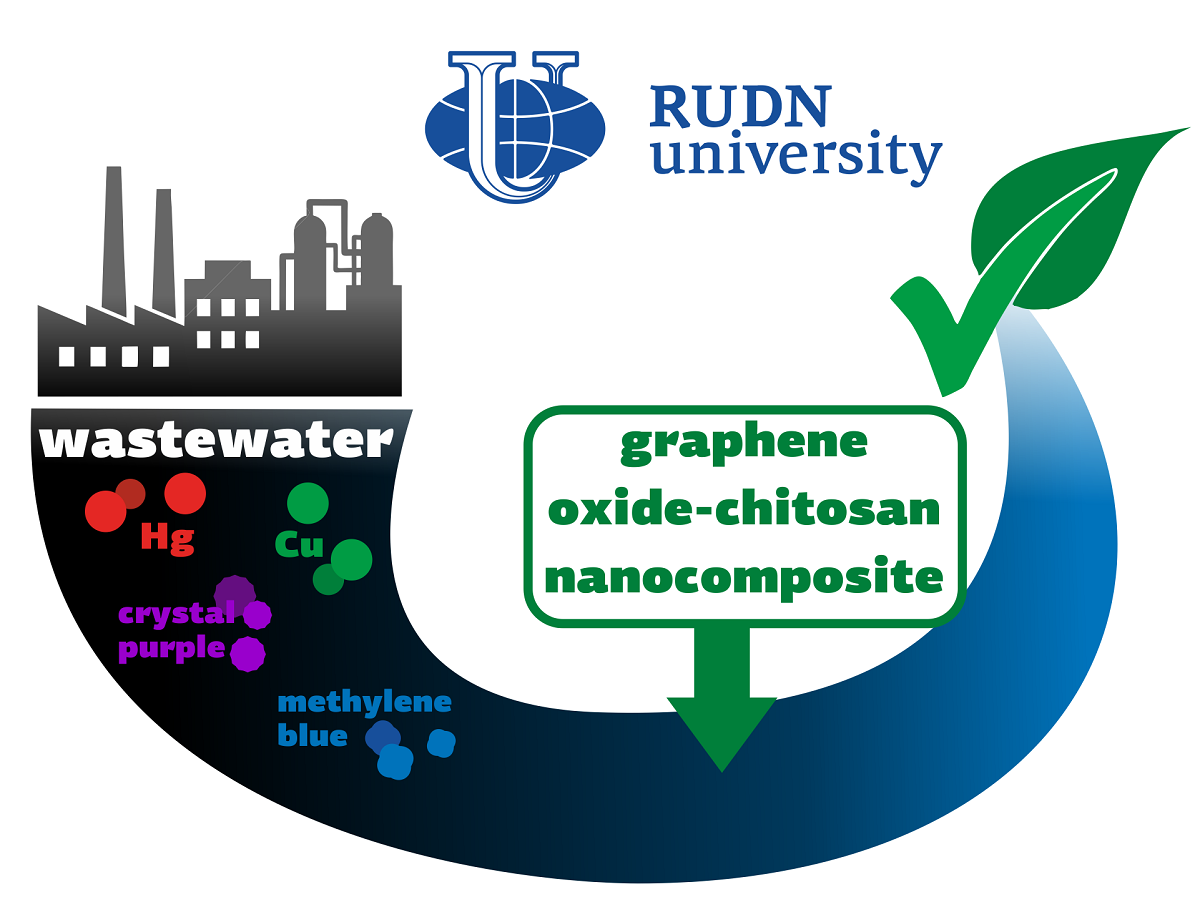RUDN University environmentalist has created a reusable "nano-sponge" for wastewater treatment

The discharge of organic and inorganic waste into wastewater is a serious threat to the environment and human health. Moreover, the combined effect of several pollutants may be stronger than their total harm. Therefore, tools are needed that would allow to get rid of several types of harmful substances at once. Existing solutions are mainly aimed at removing only organic or only inorganic compounds. A RUDN ecologist, together with colleagues from Korea and India, created a hybrid compound based on graphene and chitosan, which allows you to simultaneously remove inorganic (for example, mercury and copper) and organic (for example, methylene blue and crystal violet) pollutants from wastewater.
“Adsorbents are used to remove one chemical or several chemicals belonging to the same chemical class. However, such success has not been achieved in the removal of pollutants of different classes using adsorption. Researchers are faced with low adsorption rates and removal efficiencies. Therefore, it is necessary to synthesize a new adsorbent, since adsorption technology is needed in the future to remove several types of pollutants from wastewater,” Vinod Kumar, PhD, professor at RUDN University.
Ecologists have created a nanocomposite based on graphene oxide (a flat modification of graphite) and chitosan (a polysaccharide obtained from animal and fungal chitin). Ethylenediaminetetraacetic acid adds chemical activity to the new compound; it introduces functional groups into the nanocomposite, which determine its activity as an adsorbent. The structure and properties of the nanocomposite were determined by ecologists using X-ray diffraction, infrared spectroscopy, and other methods. Then the ecologists experimentally studied the adsorption activity of the nanocomposite.
One gram of the substance was able to absorb up to 324 mg of mercury, 130 mg of copper, 141 mg of methylene blue and 121 mg of crystal violet. Ecologists explained such a significant capacity by the fact that the nanocomposite contains many functional groups. Moreover, the “nano-sponge” can be washed and used again — after seven cycles of soaking and rinsing, the absorption efficiency has decreased by no more than 10%.
“Even in the presence of foreign metal ions, target metal ions are successfully adsorbed. Moreover, other metals are also well removed. The adsorbent also remained effective for several metal ions and dyes simultaneously. The created nanocomposite can retain its adsorption capacity for both inorganic and organic pollutants even after seven adsorption-desorption cycles. All this indicates that it can be promising in the treatment of a complex mixture of wastewater containing inorganic and organic pollutants,” Vinod Kumar, PhD, professor at RUDN University.
The results are published in the journal Chemosphere.
The project to develop a cellular model of the placenta became the winner in the Scientific Materials category of the Young Scientists 3.0 competition, organized with the support of the Presidential Grants Foundation and T-Bank.
Ten scientific journals published by RUDN University have been included in the highest level of the state list of scientific publications, the White List.
Forests are not only the lungs of the planet, but also home to millions of species. However, it has remained unclear how underground interactions between trees and fungi affect forest species richness in different climatic conditions. Previous studies have yielded conflicting results: in some regions, the dominance of certain fungi reduced tree diversity, while in others it increased it.
The project to develop a cellular model of the placenta became the winner in the Scientific Materials category of the Young Scientists 3.0 competition, organized with the support of the Presidential Grants Foundation and T-Bank.
Ten scientific journals published by RUDN University have been included in the highest level of the state list of scientific publications, the White List.
Forests are not only the lungs of the planet, but also home to millions of species. However, it has remained unclear how underground interactions between trees and fungi affect forest species richness in different climatic conditions. Previous studies have yielded conflicting results: in some regions, the dominance of certain fungi reduced tree diversity, while in others it increased it.